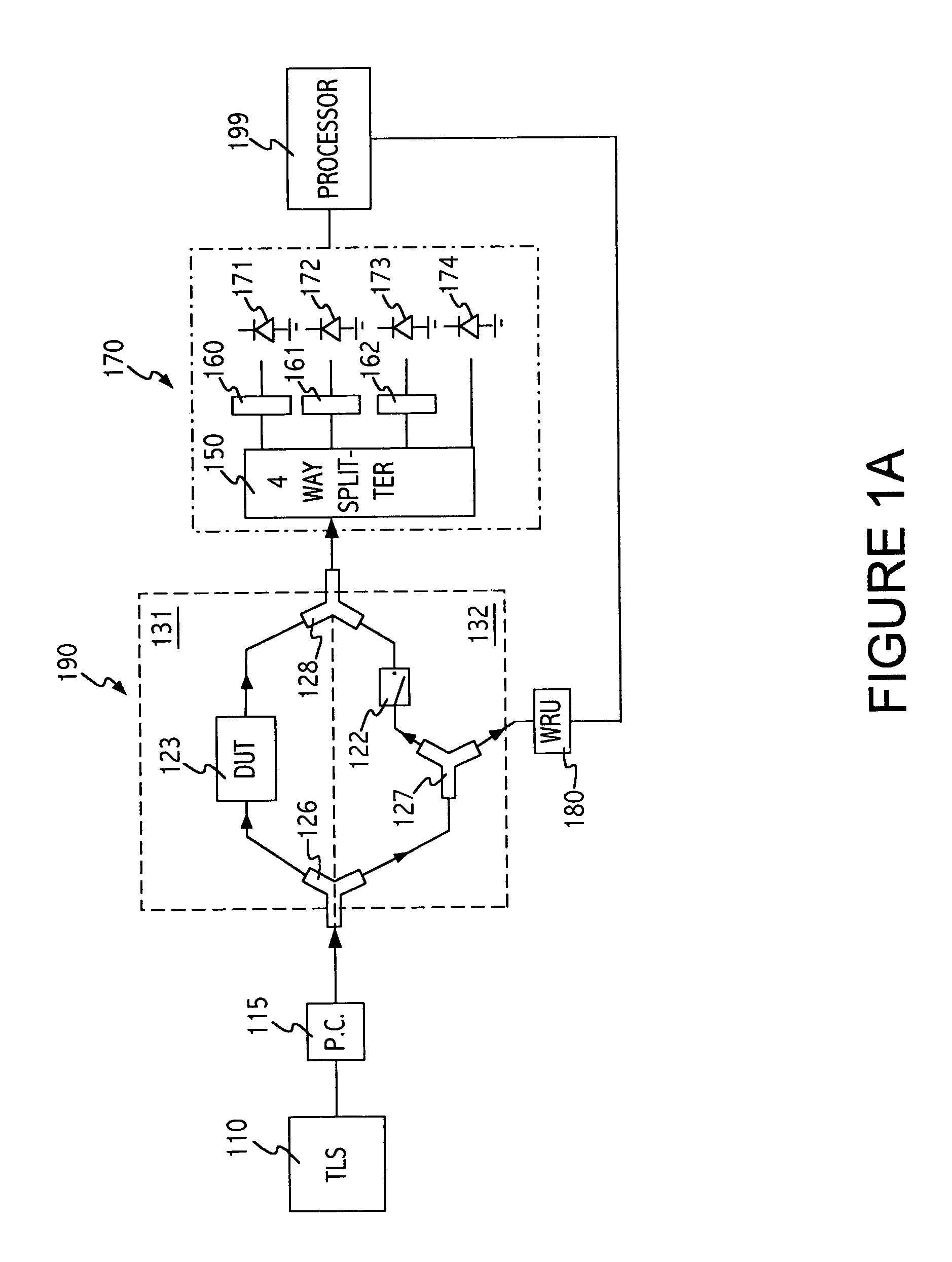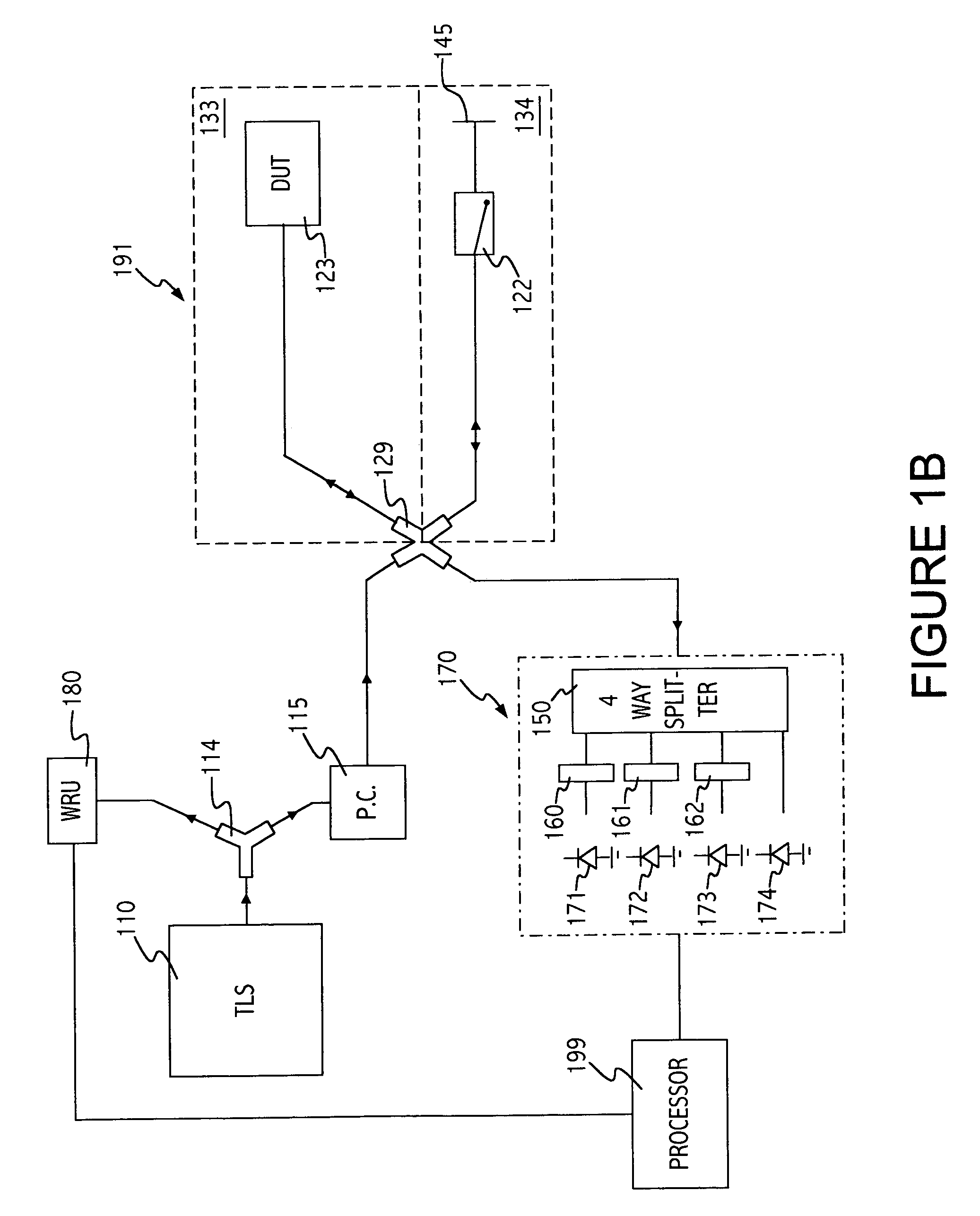System and method for removing the relative phase uncertainty in device characterizations performed with a polarimeter
a technology of relative phase uncertainty and characterization method, which is applied in the field of high-speed communication systems, can solve the problems of polarimeter's inability to measure the individual, many optical devices have group delays, and many optical devices have polarization dependent group delays, so as to achieve rapid and accurate determination, rapid and accurate measurement of desired optical parameters, and the effect of prolonging the measuremen
- Summary
- Abstract
- Description
- Claims
- Application Information
AI Technical Summary
Benefits of technology
Problems solved by technology
Method used
Image
Examples
Embodiment Construction
[0013]The Jones matrix, U of an optical device under test can be readily determined using a typical polarization analyzer. The Jones matrix, U is only determined to within a complex constant C, where C is a complex constant whose phase is the phase difference between the input and output light of the device under test and whose magnitude is related to the transmittance of the optical device under test. This complex constant cannot be determined using a typical polarimeter alone. The transfer matrix T is written as: T_=CU_=C(u11u12u21u22)(1)
The elements of the Jones matrix, uij, can be determined from polarimeter measurements but C cannot. The transfer matrix of a device under test (DUT) describes the relationship between the light input to the DUT and the light output from the DUT. Mathematically, this relationship may be expressed as
T{right arrow over (Ein)}=σeiφ{right arrow over (Eout)} (2)
where {right arrow over (Ein)} and {right arrow over (Eout)} are unit vectors.
[0014]If {r...
PUM
 Login to View More
Login to View More Abstract
Description
Claims
Application Information
 Login to View More
Login to View More - R&D
- Intellectual Property
- Life Sciences
- Materials
- Tech Scout
- Unparalleled Data Quality
- Higher Quality Content
- 60% Fewer Hallucinations
Browse by: Latest US Patents, China's latest patents, Technical Efficacy Thesaurus, Application Domain, Technology Topic, Popular Technical Reports.
© 2025 PatSnap. All rights reserved.Legal|Privacy policy|Modern Slavery Act Transparency Statement|Sitemap|About US| Contact US: help@patsnap.com



